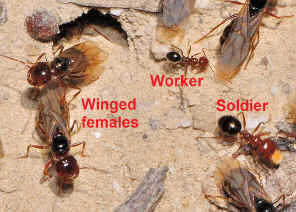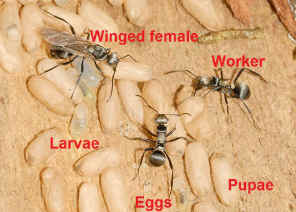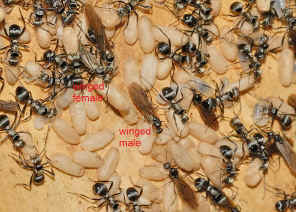Ants - FAMILY FORMICIDAE
This page contains pictures and information about Ants that we found in the Brisbane area, Queensland, Australia.
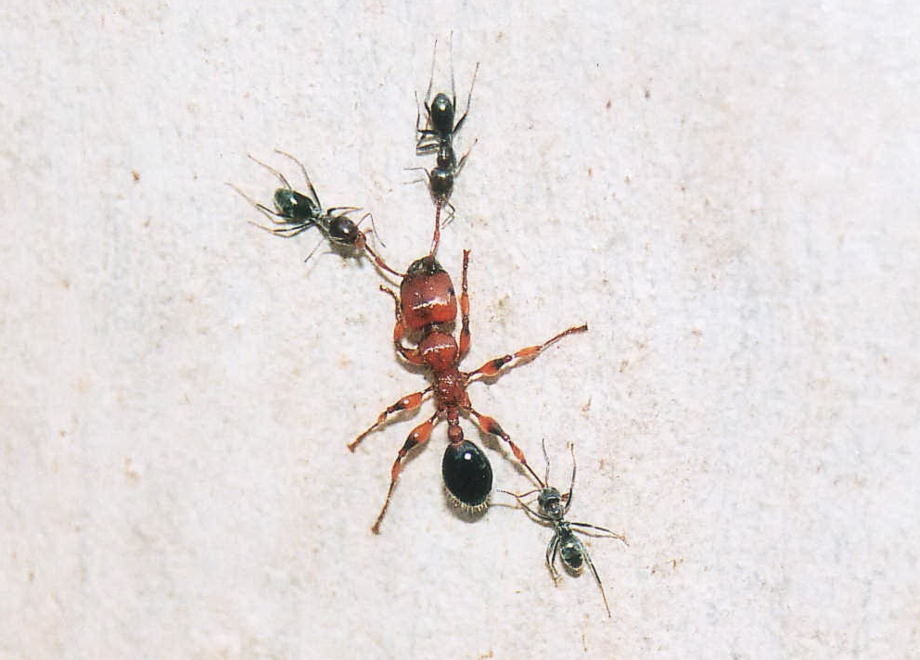
- In ants' world, number is more important.
- All ants are in family Formicidae. They all have a waist. Their waist is composed of one or two knobs which are the first one or two segments of their abdomen. Their antennae have a distinct elbow. Ants live in colonies made up of several castes. These included the winged males, winged females, soldiers and workers.
Ants are social insects; they form small to large colonies. Ant colonies usually contain: an egg-laying queen and many workers together with their brood i.e., eggs, larvae and pupae. Worker ants carry out different jobs including nest construction, foraging, looking after the brood and queen, and nest defense.
When the ant colony becomes mature, the next generation of winged females and males are produced. They are present in the nest for only a short period. Soon after emerging, they leave the nest to mate and establish new nests elsewhere.
Females usually look similar to the workers (workers are wingless female anyway) but with larger size body. Males are the same size as worker or smaller, with smaller heads, larger ocelli and smaller mandibles. Males may look more like wasps than ants.
Most ants will attack their enemy. Some species have powerful stings. Others eject vapors of formic acid.
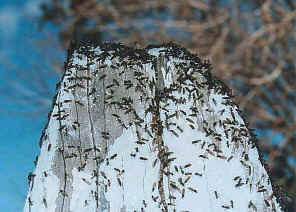
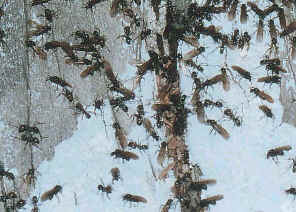
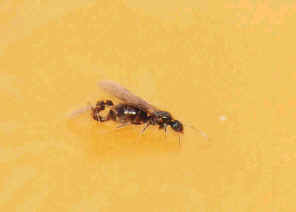
- From time to time, those ants may aggregate at some high points near their nest. Watch carefully you may find some ants with wings wandering around. The winged ants were those female and male, ready to have the so called "mating flight". They will fly to some meeting points, meet with the winged ants from other nests and mate. Female ants will them look for a suitable location to establish a new nest and build a new colony.
Ants Subfamily
- There are sixteen ant subfamilies world-wide. We have ten in Australia. Of the ten subfamilies, six are common and can be found in most areas in Brisbane. Followings listed the species that we found.
Myrmeciinae - Bulldog Ants, Jumper Ants
- The mesosoma is attached to the gaster by two distinct segments, the petiole and postpetiole. The mandibles are very long and straight, with teeth along their inner margin. There is the sting at the tip of their gaster.






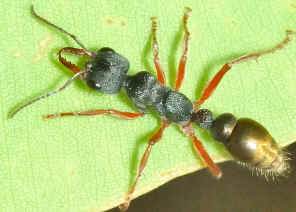

Pseudomyrmecinae - Tree Ants
- The ant subfamily Pseudomyrmecinae is a small group. This group contains only three genera. They are generally slender, wasp-like forms that forage solitarily and sting readily. The mesosoma is attached to the gaster by two distinct segments, the petiole and postpetiole .

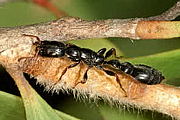
Myrmicinae - Myrmicine ants
- For the Myrmicines ants the mesosoma is attached to the gaster by two distinct segments. There is the sting at the tip of their gaster. They are from small to medium size.
-
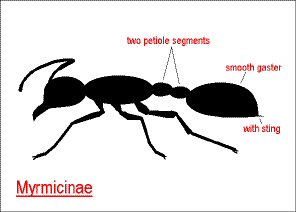



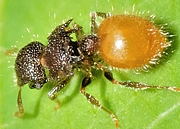
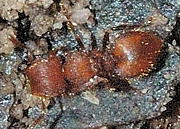
Ponerinae - Pony Ants
- The mesosoma is attached to the gaster with a single segment, the petiole. The gaster usually has a distinct impression between the first and second segments. There is the sting at the tip of their gaster.
-
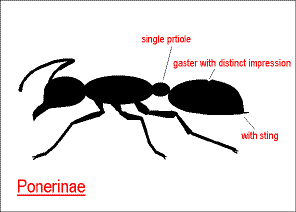

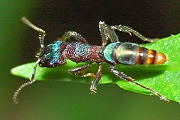
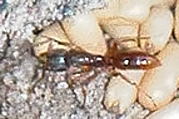
Formicinae - Spiny Ants, Sugar Ants
- For the Formicinae ants the petiole is a single segment. The gaster is smooth and does not have constrictions between the segments. The tip of the gaster is absent of a sting.
-
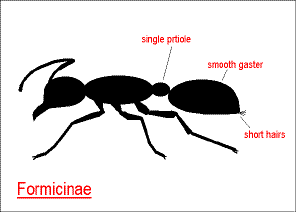


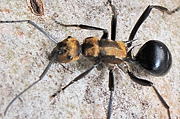
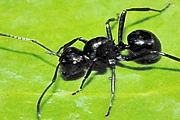

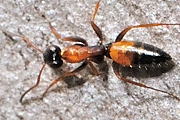


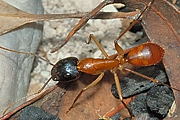
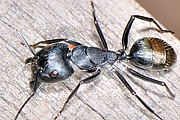
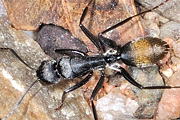
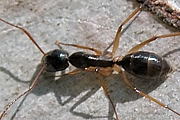
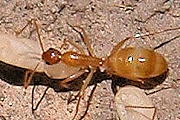
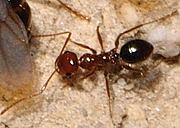
- The petiole is a single segment. The gaster is smooth and does not have constrictions between the segments. The tip of the gaster is absent of sting, and is slit-like, without a circular opening.
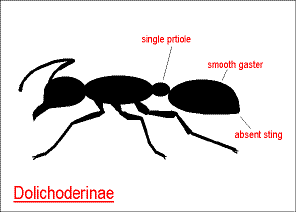

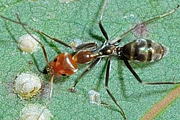

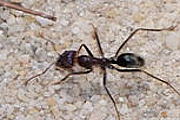
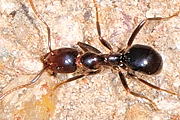



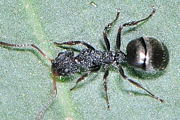
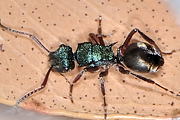
-
 There are some ants that we cannot not identify and put in this page.
There are some ants that we cannot not identify and put in this page.
- Reference and Link:
- 1. Ants Down Under - Web site by Steve Shattuck and Natalie Barnett, CSIRO 2010.
- 2. Common names of northern Australian ants - CSIRO Tropical Ecosystems Research Centre, 24 May, 2005.
- 3. Common names for Australian ants (Hymenoptera: Formicidae) - Alan N Andersen, Australian Journal of Entomology (2002) 41 , 285–293.
- 4. Australian Ant Image Database - Australian Ant Image Database, R.W Taylor.
- 5. myrmecos.net - myrmecos.net, Alex Wild, 2005.
- 6. Australian Ants: Their Biology and Identification - S Shattuck, Natalie J Barnett, CSIRO, 1999.
- 7. Common names of northern Australian ants - CSIRO Tropical Ecosystems Research Centre.
- 8. Northern Territory Insects, A Comprehensive Guide CD - Graham Brown, 2009.
- 9. What wasp is that? - An interactive identification guide to the Australasian families of Hymenoptera, 2007.
